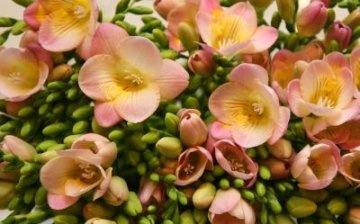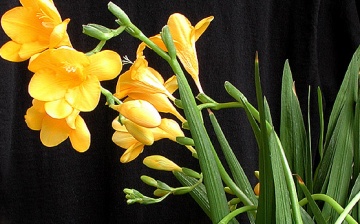Freesia flowers in the photo and on the site: we recognize diseases in time
Once you see freesia flowers in a photo, you are unlikely to forget them. These delicate, graceful plants just ask for your windowsill or garden. And you can grow them without any problems, despite the fact that they are quite exotic: they come from Africa. The main thing is to be attentive to these colors and not let them get sick.
Unfortunately, there are many possible problems in growing freesia. You need to know what it is about in order to be able to recognize and provide assistance on time.
- Fusarium is a fungal infection. Young leaves turn yellow, stems die off underground. For prevention purposes, alternate crops and do not overdry the soil. Use treated, non-contaminated soil.
- Botrytis is a gray rot. The plant loses color, a gray bloom forms on the leaves, and spots on the petals. Ventilation, constant temperature and humidity, light planting will prevent this disease from developing.
- Aphids manifest themselves as deformation of leaves and flowers. It can be seen with the naked eye. To fight, you will have to arm yourself with special solutions.
- The deformation of flowers - the absence of pistils, stamens, petals indicates that unfavorable conditions were created during the period of their formation. It is worth revising them and correcting the shortcomings next season, then the flowers will delight you fully.
- Dead leaves - drying of one of the plates in the center. Probably, it was exposed to negative temperatures or the plant experienced prolonged hypothermia. If growing freesia on a windowsill, avoid drafts. If in a greenhouse, then take care of heating.
If there is a suspicion that something is wrong with the plant, compare your flowers and freesias in the photos of special magazines. If in fact something is wrong, it will be immediately noticeable.








